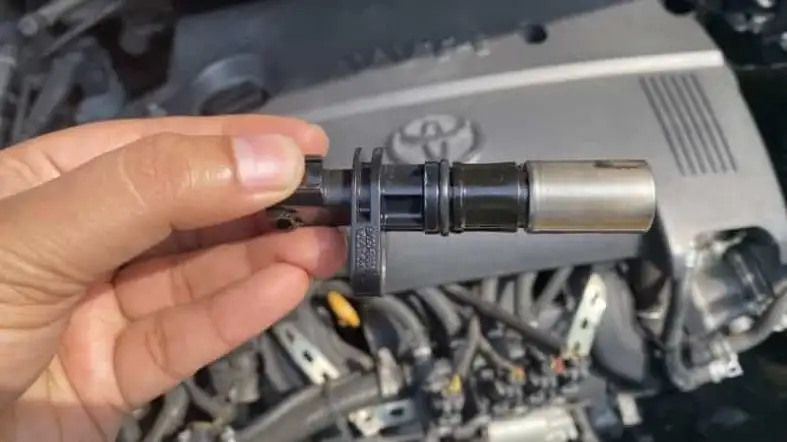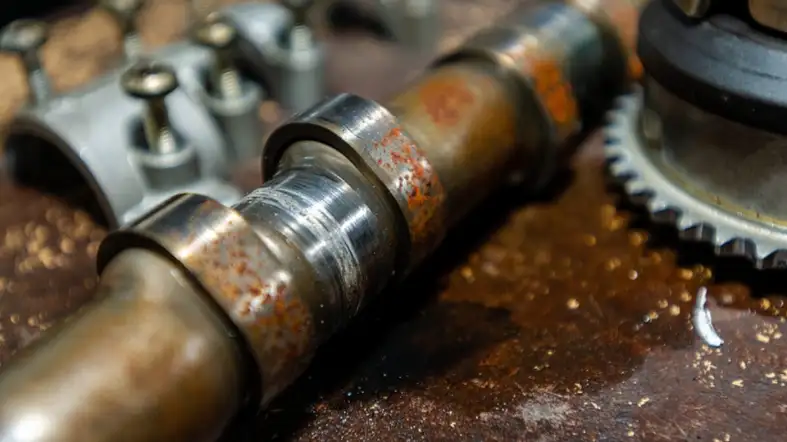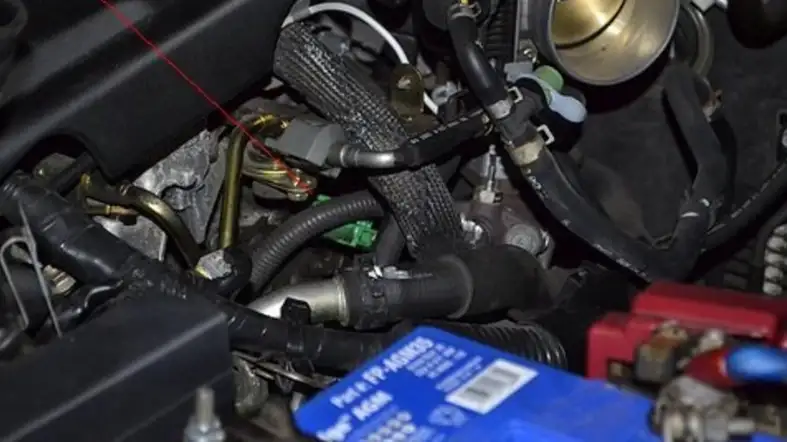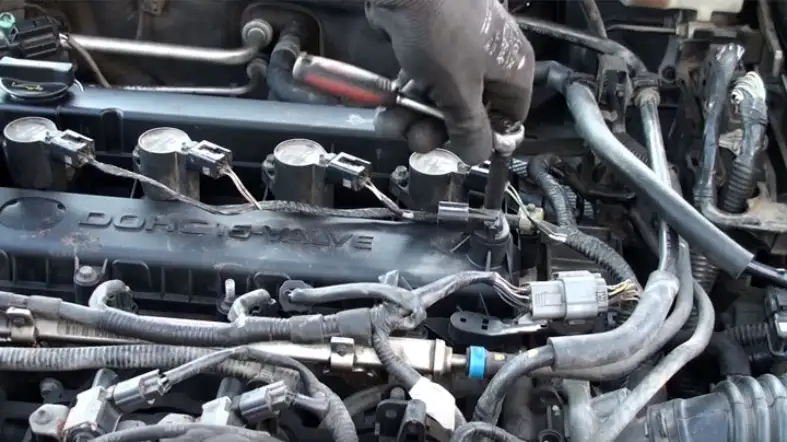Are you experiencing issues with your vehicle’s engine?
Perhaps you’ve noticed that it’s not running as smoothly as it used to, or maybe you’ve even seen a check engine light pop up on your dashboard.
If that’s the case, there’s a chance that your camshaft position sensor may need to be reset.
In this blog, we’ll take you through everything you need to know about resetting your camshaft position sensor, from the basics of how it works to the step-by-step process of resetting it yourself.
How to reset camshaft position sensor?
The camshaft position sensor is an important component of your vehicle’s engine management system.

It helps determine the position of the camshaft and sends this information to the engine control unit (ECU) which uses it to adjust the fuel injection and ignition timing.
If the camshaft position sensor is not working properly, it can cause a variety of problems such as misfiring, hesitation, and even engine stalling.
Resetting the sensor may help solve these issues. Here are the steps to reset the camshaft position sensor:
1. Locate the camshaft position sensor:
The camshaft position sensor is typically located near the camshaft in the engine block. It is usually connected to the wiring harness and held in place by a few bolts.
2. Disconnect the battery:
Before attempting to reset the camshaft position sensor, it’s important to disconnect the battery to avoid any electrical shocks or short circuits.
Use a wrench to remove the negative terminal of the battery.
3. Remove the sensor:
Using a socket wrench, remove the bolts holding the camshaft position sensor in place. Carefully disconnect the wiring harness from the sensor.
4. Clean the sensor and its surroundings:
Use a clean cloth or a soft-bristled brush to gently clean the sensor and its surroundings.
This will help remove any dirt or debris that may be interfering with the sensor’s performance.
5. Reinstall the sensor:
Reconnect the wiring harness to the sensor and use a socket wrench to reinstall the bolts holding the sensor in place.
6. Reconnect the battery:
Once the sensor is securely in place, reconnect the battery by attaching the negative terminal.
7. Turn on the engine:
Start the engine and let it run for a few minutes. This will allow the ECU to relearn the position of the camshaft and adjust the fuel injection and ignition timing accordingly.
8. Test drive the vehicle:
Take the vehicle for a test drive to see if the resetting of the camshaft position sensor has solved the problems you were experiencing.
If the issues persist, you may need to replace the sensor.
What are the Symptoms of a Faulty Camshaft Position Sensor?

A faulty camshaft position sensor can cause a variety of problems with the engine’s performance.
Here are some common symptoms of a faulty camshaft position sensor:
1. Engine misfires:
When the camshaft position sensor malfunctions, it can disrupt the accurate timing of fuel injection and ignition.
This can result in engine misfires, which cause the engine to run rough or unevenly. You may feel the car jerking or hesitating during acceleration.
2. Starting problems:
A faulty camshaft position sensor can make it difficult or even impossible to start the engine.
Since the Electronic Control Unit (ECU) relies on the sensor’s information to determine the camshaft’s position, a malfunctioning sensor can prevent the engine from starting correctly.
You may experience a no-start condition or notice that the engine takes longer to start.
3. Stalling:
If the camshaft position sensor is failing, the ECU may struggle to maintain the engine’s correct timing.
As a result, the engine can stall or shut off unexpectedly while driving.
This sudden loss of power can be dangerous, especially if it occurs in traffic or at high speeds.
4. Reduced power and acceleration:
A faulty camshaft position sensor can significantly impact the engine’s power and acceleration capabilities.
You might notice a lack of power when trying to accelerate quickly or climb uphill.
The engine may feel sluggish and struggle to reach higher speeds.
5. Check engine light:
When the camshaft position sensor malfunctions, it can trigger the check engine light on the dashboard.
The check engine light serves as a warning sign that something is amiss with the engine or its components.
If the light illuminates, it is crucial to have your vehicle inspected by a professional mechanic to diagnose and address the issue promptly.
6. Poor fuel economy:
A malfunctioning camshaft position sensor can lead to increased fuel consumption.
The sensor’s inaccurate readings can disrupt the engine’s fuel injection process, causing the engine to use more fuel than necessary.
Consequently, you may experience reduced fuel efficiency, requiring more frequent refueling and negatively impacting your overall mileage.
7. Rough idling:
When the camshaft position sensor fails, the engine may exhibit rough idling.
This means that the engine feels unsteady and may vibrate or shake more than usual when at a standstill.
You might notice these vibrations through the steering wheel or even feel them inside the cabin.
What happens if the camshaft sensor is in wrong position?

If the camshaft sensor is installed in the wrong position, it can cause several problems in the engine.
The camshaft sensor is responsible for sending signals to the engine control unit (ECU) about the position of the camshaft.
The ECU then uses this information to control the ignition timing, fuel injection, and other engine functions.
Here are some of the potential consequences of a misaligned camshaft sensor:
1. Engine Misfire:
If the camshaft sensor is not in the correct position, the engine may misfire, causing a rough idle and poor acceleration.
This can also cause the engine to stall or hesitate when accelerating.
2. Check Engine Light:
A misaligned camshaft sensor can trigger the check engine light to come on.
This can indicate a problem with the engine’s timing or fuel system and should be addressed promptly.
3. Reduced Fuel Efficiency:
If the camshaft sensor is not sending accurate signals to the ECU, the engine may not be running efficiently.
This can result in decreased fuel efficiency and higher emissions.
4. Engine Damage:
In extreme cases, a misaligned camshaft sensor can cause serious engine damage.
If the engine is not receiving accurate information about the camshaft position, it can cause the valves to open and close at the wrong time, leading to valve damage or even a broken piston.
5. Transmission Problems:
A misaligned camshaft sensor can also affect the transmission. If the engine is not running properly, it can cause the transmission to shift erratically or not at all.
How to Prevent Camshaft Position Sensor Problems?

Here are some tips to prevent camshaft sensor resets:
1. Regular Maintenance:
Regular maintenance is essential for preventing camshaft position sensor problems.
By following the manufacturer’s recommended maintenance schedule, you can ensure that your vehicle’s engine remains in good condition and reduce the risk of sensor resets.
Some key maintenance tasks to focus on include:
- Oil Changes: Regularly changing the engine oil helps to keep it clean and properly lubricated, reducing wear and tear on the camshaft sensor and other engine components.
- Air Filter Replacements: A clean air filter allows for proper air circulation in the engine, preventing dust and debris from entering and potentially damaging the camshaft sensor.
- Tune-ups: Regular tune-ups, including spark plug replacements and ignition system inspections, ensure that the engine operates efficiently and minimizes the chances of sensor resets.
2. Use High-Quality Parts:
Using high-quality replacement parts, especially when it comes to camshaft sensors, is crucial for preventing problems.
Inferior parts or counterfeit components may not function properly, leading to sensor malfunctions and resets.
It is important to always choose parts that meet the manufacturer’s specifications to ensure compatibility and reliable performance.
3. Proper Installation:
Proper installation of the camshaft sensor is vital to prevent sensor resets.
It is essential to follow the manufacturer’s instructions carefully during the installation process.
Incorrect installation can damage the sensor or cause it to malfunction, resulting in resets and potential engine issues.
If you are unsure about the installation process, it is recommended to seek professional assistance.
4. Avoid Overheating:
Overheating can be detrimental to the camshaft sensor and increase the likelihood of resets. To prevent overheating:
- Coolant Level Checks: Regularly check the coolant level and ensure it is within the recommended range. Low coolant levels can lead to engine overheating and potential sensor problems.
- Thermostat Replacement: If your vehicle’s engine tends to run hot, consider replacing the thermostat to ensure proper temperature regulation.
- Avoid Extreme Temperatures: Avoid driving in extremely hot weather conditions or overloading the engine, as these factors can contribute to overheating and sensor resets.
5. Check Wiring:
Inspecting the wiring that connects the camshaft sensor to the Engine Control Unit (ECU) is important for preventing resets.
Over time, the wiring may become damaged, frayed, or corroded, leading to connectivity issues and potential sensor malfunctions.
Regularly check the wiring and replace any damaged or worn-out wires promptly to maintain proper sensor function.
6. Avoid Water Damage:
Water damage can cause the camshaft sensor to fail or reset. To prevent water-related issues:
- Avoid Deep Water: Refrain from driving through deep water or flooded areas, as water can enter the engine bay and damage the sensor.
- Parking Considerations: Be mindful of where you park your vehicle. Avoid areas prone to flooding or places where water accumulation is likely.
7. Address Warning Signs:
If your vehicle displays warning signs such as the check engine light or abnormal engine performance, it is crucial to address them promptly.
Ignoring these signs can lead to further problems, including camshaft sensor resets.
If you notice any unusual symptoms or warning lights, consult a qualified mechanic to diagnose and resolve the issue before it worsens.
Timely intervention can help prevent sensor problems and ensure the overall health of your vehicle’s engine.
FAQs
Q. What Is A Camshaft Position Sensor?
A: A camshaft position sensor is a device that monitors the position of the camshaft in an engine.
It sends signals to the engine control unit (ECU) which then controls various engine functions.
Q. Why Would I Need To Reset My Camshaft Position Sensor?
A: You may need to reset your camshaft position sensor if it’s not functioning properly or if you’ve recently replaced it.
Resetting it can help ensure that your engine is running smoothly and efficiently.
Q. Can I Reset My Camshaft Position Sensor Myself?
A: Yes, you can reset your camshaft position sensor yourself if you have some mechanical knowledge and the necessary tools.
However, if you’re not confident in your abilities, it’s best to take your vehicle to a qualified mechanic.
Q. What Are The Signs That My Camshaft Position Sensor Needs To Be Reset?
A: Some signs that your camshaft position sensor may need to be reset include a rough idle, poor acceleration, difficulty starting the engine, and a warning light on your dashboard.
Q. How Often Should I Reset My Camshaft Position Sensor?
A: You typically don’t need to reset your camshaft position sensor on a regular basis.
However, if you’re experiencing issues with your engine and suspect that the sensor may be the problem, it’s worth considering resetting it as part of your troubleshooting process.
Conclusion
Resetting the camshaft position sensor is not a complicated task and can be done by following a few simple steps.
By resetting it, you can ensure that it is accurately detecting the position of your camshaft and providing the necessary information to your vehicle’s engine control module.
If you’re unsure about any of the steps involved in resetting the camshaft position sensor, it’s always best to consult a professional mechanic.
But with a bit of patience and some basic tools, you can easily reset the sensor yourself and get back on the road in no time!
